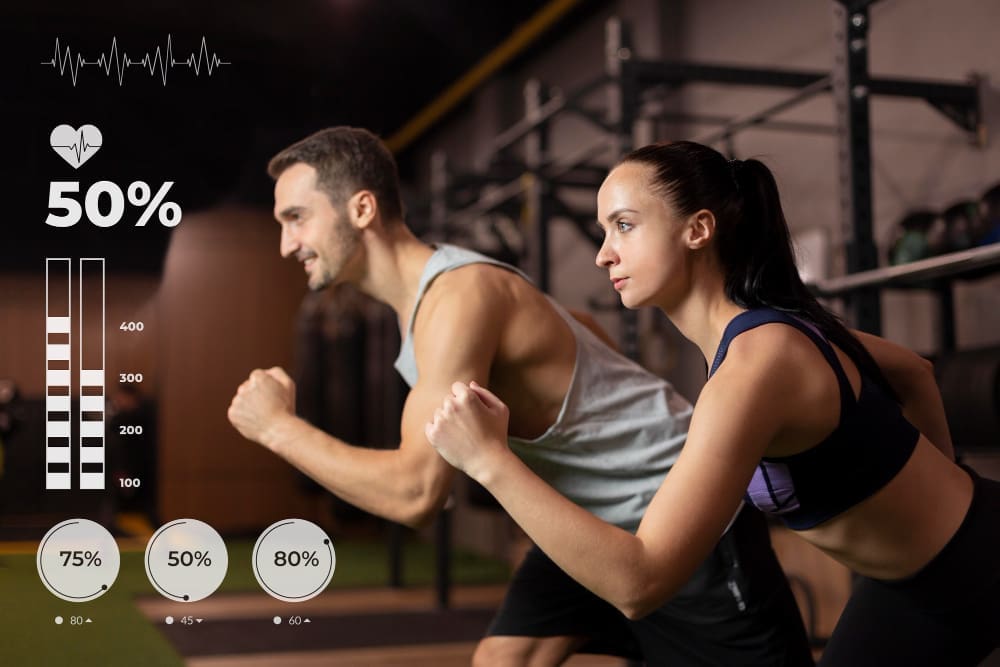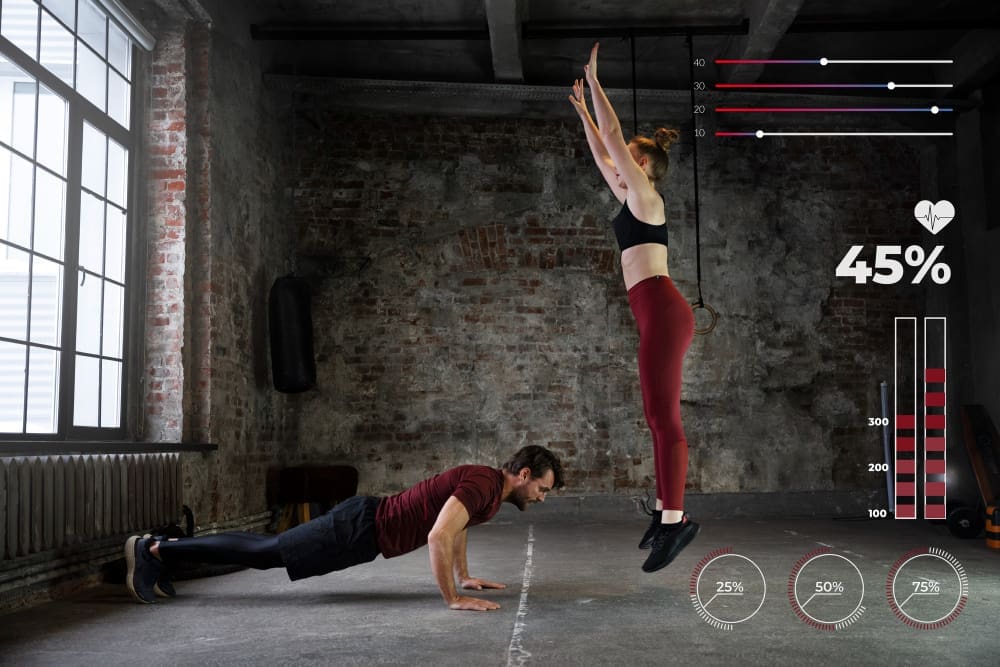The debate between High-Intensity Interval Training (HIIT) and Low-Intensity Steady-State (LISS) cardio has become a central conversation for anyone looking to improve their health and fitness. For individuals seeking maximum results in minimal time, HIIT offers a powerful, science-backed solution by alternating short bursts of all-out effort with brief recovery periods. Conversely, for those prioritizing sustainability, joint health, and building a foundational aerobic base, LISS provides a gentler, more accessible path through sustained, moderate-effort exercise like brisk walking or cycling. Ultimately, the “better” form of cardio is not a one-size-fits-all answer; it depends entirely on your personal goals, current fitness level, available time, and what you genuinely enjoy enough to do consistently.
Understanding High-Intensity Interval Training (HIIT)
At its core, HIIT is a training philosophy built on the principle of alternating between intense, anaerobic exercise and periods of lower-intensity recovery. The goal is to push your heart rate into a high-exertion zone, typically 80-95% of your maximum heart rate, for a short duration.
These work intervals can last anywhere from 20 seconds to a few minutes. They are immediately followed by a recovery period that is often equal to or slightly longer than the work interval. This cycle is repeated several times to complete a full HIIT session, which can be as short as 10 minutes or as long as 30.
Common examples of HIIT workouts include sprinting on a treadmill for 30 seconds followed by 60 seconds of walking, or performing bodyweight exercises like burpees or jump squats for 45 seconds with 15 seconds of rest in between. The key is the intensity of the work period; it should feel challenging and leave you breathless.

The Science-Backed Benefits of HIIT
HIIT’s popularity isn’t just hype; it’s supported by a robust body of scientific research highlighting its remarkable efficiency and effectiveness.
Time Efficiency
Perhaps the most significant advantage of HIIT is the amount of benefit you can achieve in a short amount of time. Studies have repeatedly shown that 15 minutes of interval training can provide similar, and in some cases superior, cardiovascular and metabolic benefits as an hour of steady-state cardio. This makes it an ideal choice for busy professionals, parents, and anyone with a packed schedule.
The “Afterburn” Effect (EPOC)
HIIT is famous for its effect on your metabolism. The intense exertion significantly increases your body’s need for oxygen during and after the workout. This phenomenon, known as Excess Post-Exercise Oxygen Consumption (EPOC), means your body continues to burn calories at an elevated rate for hours after you’ve finished exercising as it works to restore itself to a resting state. While a LISS session burns calories during the activity, the post-workout metabolic boost is substantially smaller.
Improved Cardiovascular Health
Pushing your heart to work at near-maximal levels during the intervals is an incredibly effective way to strengthen it. Research indicates that HIIT can significantly improve VO2 max—the maximum amount of oxygen your body can utilize during intense exercise. A higher VO2 max is a key indicator of cardiovascular fitness and overall longevity.
Enhanced Metabolic Health
HIIT has also been shown to improve insulin sensitivity. This means your body becomes more efficient at using glucose for energy, which can help regulate blood sugar levels and reduce the risk of developing type 2 diabetes. These benefits are often seen after just a few weeks of consistent HIIT training.
Decoding Low-Intensity Steady-State (LISS) Cardio
LISS is the more traditional form of cardiovascular exercise that many of us are familiar with. It involves performing an aerobic activity at a low-to-moderate intensity, typically around 50-65% of your maximum heart rate, for a continuous and extended period.
Unlike the fluctuating intensity of HIIT, the goal of LISS is to maintain a consistent pace—or “steady state”—for the entire duration of the workout, which usually lasts 30 to 60 minutes or more. Think of it as being able to hold a conversation while you’re exercising.
Classic examples of LISS include a long, brisk walk, a steady jog, using the elliptical machine at a consistent speed, or going for a leisurely bike ride. The focus is on duration and consistency rather than all-out intensity.
The Proven Advantages of LISS
While HIIT often grabs the headlines, LISS remains a cornerstone of a well-rounded fitness regimen for several important reasons.
Accessibility and Lower Injury Risk
Because LISS is less intense and lower impact, it is far more accessible for beginners, older adults, or individuals recovering from an injury. The movements are less explosive, placing significantly less stress on the joints, tendons, and ligaments. This lower barrier to entry makes it a safe and effective starting point for building a fitness habit.
Building a Strong Aerobic Base
LISS is exceptionally effective at building endurance and improving your body’s ability to use fat for fuel. It strengthens the heart muscle and increases the density of mitochondria—the powerhouses of your cells—which is fundamental for long-term cardiovascular health. A strong aerobic base built with LISS can also improve your performance during and recovery from HIIT sessions.
Enhanced Recovery
LISS is an excellent tool for active recovery. Performing a light LISS session on a day after intense strength training or a HIIT workout can help reduce muscle soreness by increasing blood flow to the muscles. This gentle activity delivers oxygen and nutrients that aid in the repair process without adding significant stress to the body.
Mental Health and Sustainability
Many people find the repetitive, rhythmic nature of LISS to be meditative and stress-reducing. It provides an opportunity to clear your head, listen to a podcast, or enjoy nature. This inherent enjoyment factor can make LISS a more sustainable practice for individuals who find the high-intensity nature of HIIT to be mentally taxing or unpleasant, leading to better long-term adherence.
HIIT vs. LISS: A Head-to-Head Comparison
To make the best choice, it’s helpful to compare the two modalities directly across several key areas.
For Fat Loss
This is the most debated point. HIIT burns more calories per minute and triggers a significant EPOC effect, leading to a higher total calorie burn over a 24-hour period from a short session. However, a long LISS session (e.g., 60 minutes) can burn a substantial number of calories during the workout itself, sometimes more than a 15-minute HIIT session. Research suggests both are effective for fat loss, but HIIT may be more time-efficient for achieving it. The best approach often involves both.
For Time Commitment
There is no contest here: HIIT is the clear winner. If you only have 20-30 minutes for a workout, a HIIT session will deliver far greater physiological benefits than a LISS session of the same duration.
For Beginners
LISS is the safer and more appropriate starting point. It allows beginners to build a foundational level of fitness and confidence without the high risk of injury or burnout associated with HIIT. Once a solid base is established, HIIT can be gradually introduced.
For Enjoyment and Adherence
This is entirely subjective. Some people thrive on the challenge and adrenaline rush of HIIT, while others dread its intensity. Many prefer the calming, steady rhythm of LISS. The “best” cardio is the one you will do consistently, so choosing the type you genuinely enjoy is paramount for long-term success.
How to Choose: The Right Cardio for Your Goals
Let’s move from theory to practice. Here’s how to decide which cardio style, or combination, is right for you.
If your primary goal is time-efficient fat loss and peak conditioning, prioritize HIIT. Aim for 2-3 HIIT sessions per week on non-consecutive days to allow for adequate recovery.
If you are a beginner or returning to exercise after a break, start with LISS. Aim for 3-5 sessions per week of 30-45 minutes to build your aerobic base safely.
If your main goal is active recovery and stress reduction, LISS is your best friend. Use it on days off from more intense training to promote blood flow and mental clarity.
If you are training for an endurance event like a 10k or marathon, LISS will form the backbone of your training, with HIIT used sparingly to improve speed and lactate threshold.
The Best of Both Worlds: A Balanced Approach
For most people, the optimal strategy isn’t choosing one over the other but rather integrating both HIIT and LISS into a well-rounded weekly routine. This approach allows you to reap the unique benefits of each modality while minimizing their respective drawbacks.
A balanced week could look like this:
- Monday: Strength Training (e.g., Upper Body)
- Tuesday: HIIT (20 minutes)
- Wednesday: LISS (45-60 minutes of brisk walking or cycling) or Active Recovery
- Thursday: Strength Training (e.g., Lower Body)
- Friday: HIIT or a Moderate-Intensity Cardio Session (30 minutes)
- Saturday: LISS (Long walk, hike, or bike ride)
- Sunday: Rest
This schedule leverages HIIT for its time-efficient metabolic benefits and LISS for building endurance, aiding recovery, and providing mental-health benefits, all while prioritizing strength training as the foundation for a healthy body composition.
In the end, the HIIT versus LISS debate resolves not with a single victor, but with a personalized strategy. Both are powerful tools in your wellness toolkit. By understanding their distinct purposes and listening to your body, you can move beyond the “which is better” question and instead ask, “How can I use both to build the strongest, healthiest version of myself?”







